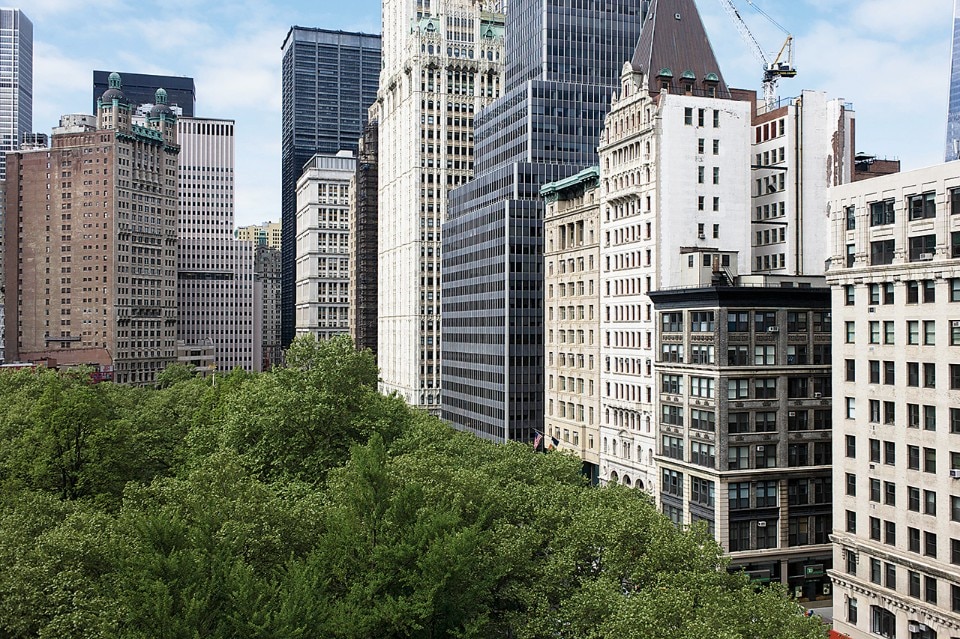This article is part of a series of contents that anticipate the themes that will be discussed during the second edition of domusforum - the future of cities, in Milan on October 10, 2019.
In 2007, New York City’s mayor Michael Bloomberg pledged to plant one million trees, in the largest urban afforestation project of its kind in the United States. The Million Trees project was a massive investment in the urban landscape, intended to help prepare the city for a million new residents, to grow the economy, to combat climate change, and to enhance the quality of life for all New Yorkers. Eight years later, with those tree planting goals met and exceeded, the task of caring for those trees and reaping the full benefit of that investment kicked in. In response, New York City’s Parks Department launched a mammoth project to map and describe every street tree in the five boroughs — 694,249 trees to be exact (the vast majority of the city’s 5.2 million trees are found in parks and natural lands). The result, the searchable, interactive New York City Street Tree Map lists the location, size, species, and “ecological benefits” of every street tree in the city: the stormwater intercepted, energy conserved, air pollutants removed, CO2 reduced, and a total value of annual benefits, all listed in dollar amounts. [1]
These ecological benefits are an outgrowth of the concept of “ecosystem services,” an idea coined by environmental economists in the 1980s to put a price tag on the positive contributions that the world’s ecosystems offer to human society.[2] These functions are grouped into four major categories: “provisioning” services that provide the food, fuel, and fiber that people use; “regulating” services like preventing excess flooding and soaking up excess carbon dioxide; “supporting” services that underpin biological life on earth; and “cultural” services that provide recreation, education, and spiritual sustenance to society. The ecosystem service framework was popularized through its adoption by the United Nations’ Millennium Ecosystem Assessment, prompting thousands of scientific and economic studies trying to pin down exactly how much we should value these services and the dollar amount that will sufficiently reflect their current worth for the purposes of conservation and restoration.[3] The New York City Street Tree Map, for example, relies on the iTree database from the US Forest Service, which has established a monetary value of trees based on their species, size, and location.
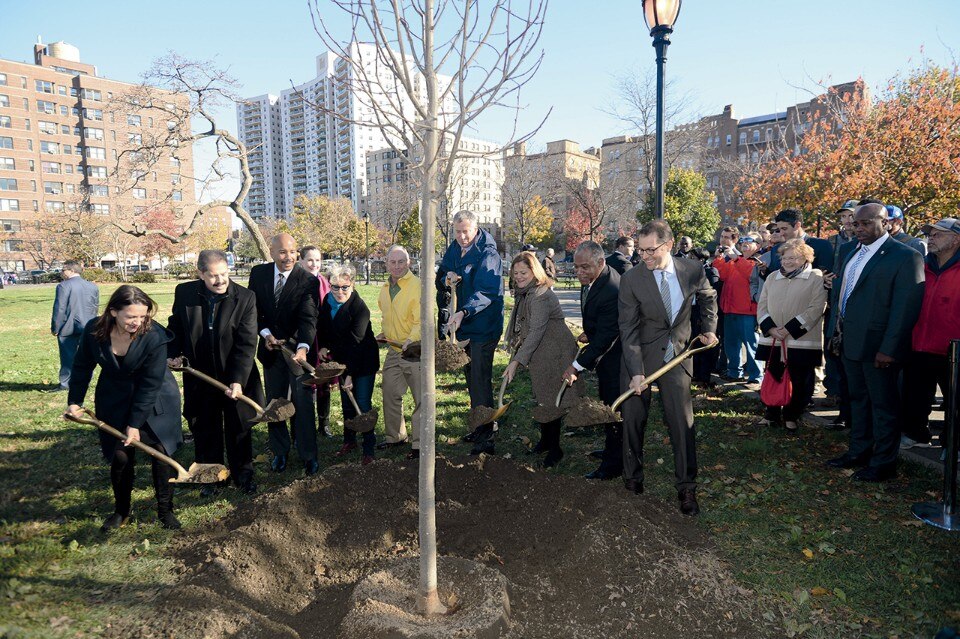
What does it mean to definitively establish the value of the urban forest in monetary terms? Are city trees only as valuable as the services they provide? A recent exhibition at Columbia’s Graduate School of Architecture and Planning (GSAPP) in New York City called “Offsetted,” explores these questions. The exhibit’s creators, Daniel Fernandez Pascual and Alan Schwabe — founders of the research-based design practice Cooking Sections — present episodes of trees as contested actors in the story of New York’s construction, exploring individual trees’ symbolic significance in passages of NYC history, calling attention to the tendency for urbanists and corporations to use the planting or removal of trees as agents of power. The exhibition asks viewers to consider how the ecosystem services concept might actually contribute to the continuing production of emissions and pollution, questioning the practice of using trees as carbon offsets, since the whole idea of an offset creates a spatial disconnection between the emission source and its amelioration. What, the architects ask, are the rights of trees not to serve as carbon offsets, but to simply “just be trees”? Is this a problem of creeping capitalism, ever-expanding to incorporate even nature in the framework of neoliberal market economics? The question is, in effect, the following: What do we lose when we commodify nature?
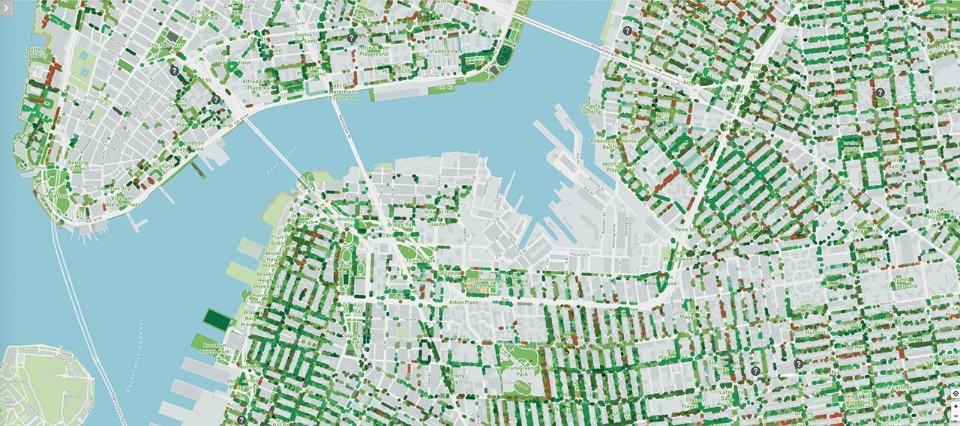
One reason it feels wrong to speak about nature purely in monetary terms is that “use value” is not everything; there is a longstanding philosophical critique against discounting alternative valuation frameworks, such as a landscape’s spiritual value to an indigenous group, its sentimental value to a long-time community resident, or its existence value rooted in a plant or animal’s inherent right to exist. However, in today’s globalized neoliberal economy, when a landscape is not assigned an ecosystem service value, it is essentially being valued at zero, which is often tantamount to putting it on the chopping block in favor of a short-term use that can demonstrate a monetary return. Many an environmental protest has had its roots in the disagreement between the use- and non-use value of a landscape.
Then again, the monetary value assigned by such tools is only as good as the data it’s based on, and New York City’s street trees are much more confidently assessed in some of their services than in others. When calculating the benefits of stormwater reduction, we can consider the cost of building and maintaining a wastewater treatment plant compared to a tree’s capacity to manage water through evapotranspiration. Assessing the value of carbon sequestration, and the cost of climate change, is more complicated. Around the world, carbon is taxed or traded at prices ranging from less than $1 per ton in Poland and Ukraine, to about $16 per ton in the European Union’s Emission Trading System (ETS), to $139 per ton in Sweden.[4] As the likely damages from the effects of climate change come into ever-sharper view, that cost of carbon is sure to increase dramatically. iTree values carbon emissions at $139 a ton, on par with the most aggressive end of the current carbon valuation spectrum.[5]
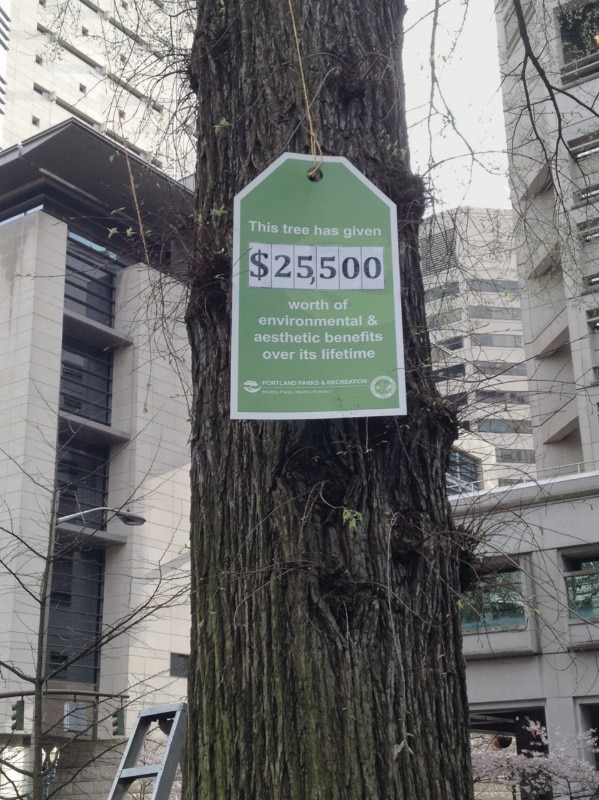
There is certainly a clear-eyed case to be made against the monetization of carbon offsets because the severity of the climate crisis demands an immediate cessation of all fossil fuel combustion, whereas carbon offsets offer the equivalent of buying indulgences in medieval churches — a permission to emit carbon while calling the resulting emissions “net-zero.” But the problem with offsets might not be that we’re paying for them, but that we are not being asked to pay enough.
The creators of the New York City Street Tree Map state unequivocally that the value of the urban forest extends far beyond economics, and that some benefits are priceless. The introduction to the project belies this internal contradiction: “Trees shade us in the summer, beautify our neighborhoods, help reduce noise, and support important urban wildlife. Beyond these priceless benefits, our urban forest provides us a concrete return on the financial investment we put into it.”
We understand that trees shape urban experience. In this manner, street trees are simultaneously seen through increasingly divergent lenses: as critical elements of a livable city, and also as agents of displacement or gentrification. Isn’t it well-established, at this point, that aside from all their beneficial services and amenity value, nice mature street trees drive up home values?[6] The distribution of trees in cities around the world is indeed unequal, and much study has gone into the legacy patterns of investment and disinvestment that result in these unequal distributions.[7] But let us not confuse the root causes of inequality with its symptoms: saying that tree planting causes gentrification obscures the root causes of gentrification — housing segregation and systemic inequality, the racial poverty gap, unequal access to capital, developer-driven speculation, and lack of basic renters’ protection. How can one suggest that the route to combatting the rising home values that so often lead to displacement of lower-income communities, is found in further depriving these communities of basic amenities and in the perpetuation of a low-status environment?
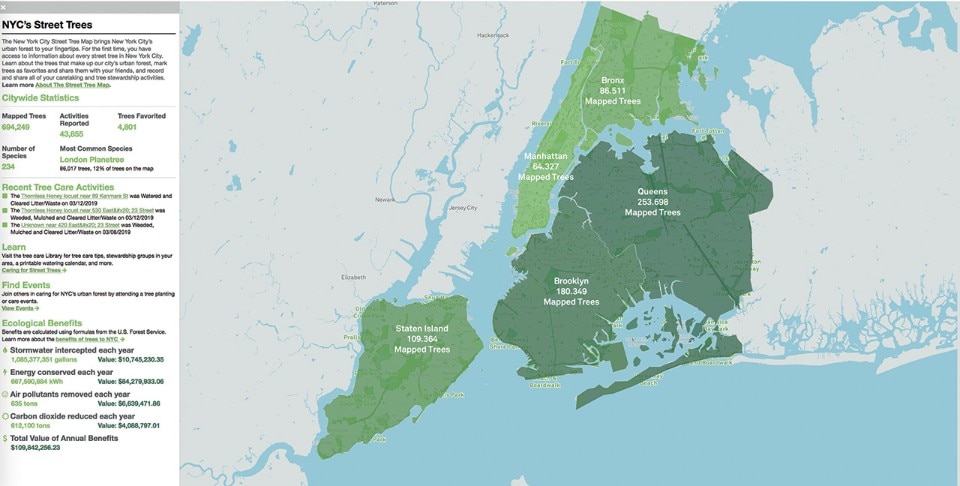
In North America, many urban tree mapping projects are spearheaded and run by non-profits, and much of the data collected is being done through “citizen science,” not by developers or the government. Why would communities do this? They participate because they find value in the data and use it to advocate for environmental justice, for more equitable distribution of resources to their neighborhoods. What does it mean to respond ethically to legacies of oppression and inequality? In cities that are seriously embracing the demands of environmental justice, trees are one of the most immediate agents of counteracting historic patterns of disinvestment, while reducing perceptions of crime, building social infrastructure, and protecting vulnerable populations against future climate-driven stresses such as increasingly intense heat waves.[8]
The “Offsetted” exhibition struggles to integrate the idea of trees as nature and trees as laborers, doing paid work for us. Yes, the ecosystem service framework privileges the use value of nature over its more intangible non-use values. But it also helps us to balance our notions of landscape as an element of both nature and infrastructure. Urban ecosystems cannot be easily separated from the social and technological systems with which they are entwined; they are on par with the engineered systems that we have no problem considering in economic terms. Through projects like The New York City Street Tree Map, public agencies and green space advocates ask us to recognize that urban landscapes are just as essential to the public good as streets, sewers, bridges or public buildings. We may appreciate the spiritual and existential value of nature, but we also recognize that nature in cities is inherently infrastructural, whose perpetuation is dependent on the crass reality of budgets, maintenance, advocacy, and care.
The DATA:
Number of trees in New York City: 5.2 million
Percent of land covered in trees: 24%
Acres of urban tree canopy: 44,509 acres
Number of trees mapped by NYC Street Tree Map: 694,249
Number of street tree species: 234
Stormwater intercepted each year by street trees: 1,085,377,351 gallons
Value of stormwater intercepted each year: $10,745,230
CO2 reduced each year by street trees: 612,100 tons
Value of CO2 reduced each year $4,088,797
Total value of annual benefits from street trees: $109,842,256
- 1:
- New York City Parks Department, New York City Tree Map, https://tree-map.nycgovparks.org
- 2:
- De Groot, R.S., “Environmental functions as a unifying concept for ecology and economics”, in Environmentalist n. 7, 1987, pp. 105-109
- 3:
- Millenium Ecosystem Assessment, Ecosystems and human well-being: Multiscale assessments – Findings of the sub-global assessments working group Millennium Ecosystem Assessment series, Washington, DC, Island Press, 2005. https://www.millenniumassessment.org
- 4:
- World Bank; Ecofys, State and Trends of Carbon Pricing 2018, Washington, DC, World Bank, 2018. https://openknowledge.worldbank.org/handle/10986/29687
- 5:
- Interagency Working Group on Social Cost of Carbon, United States Government, Technical Support Document: Social Cost of Carbon for Regulatory Impact Analysis Under Executive Order 12866, 2015
- 6:
- Wolf, K.L., “Community Economics - A Literature Review” in Green Cities: Good Health (www.greenhealth.washington.edu), College of the Environment, University of Washington. 2010. Donovan, G.H., Butry, D.T., “Trees in the City: Valuing Street Trees in Portland, Oregon”, Landscape and Urban Planning n. 94, 1, 2010, pp.77-83
- 7:
- Ernstson, Henrik, “The Social Production of Ecosystem Services: A Framework for Studying Environmental Justice and Ecological Complexity in Urbanized Landscapes”, in Landscape and Urban Planning 109, n. 1, 2013, pp. 7–17. Grove, Morgan, et al., "The legacy effect: understanding how segregation and environmental injustice unfold over time in Baltimore", in Annals of the American Association of Geographers, n. 108.2, 2018, pp. 524-537
- 8:
- Eric Klinenberg, Palaces for the People: How Social Infrastructure Can Help Fight Inequality, Polarization, and the Decline of Civic Life, 2018
Picture on top, Richard Baker by In Pictures Ltd/Corbis via Getty Images


